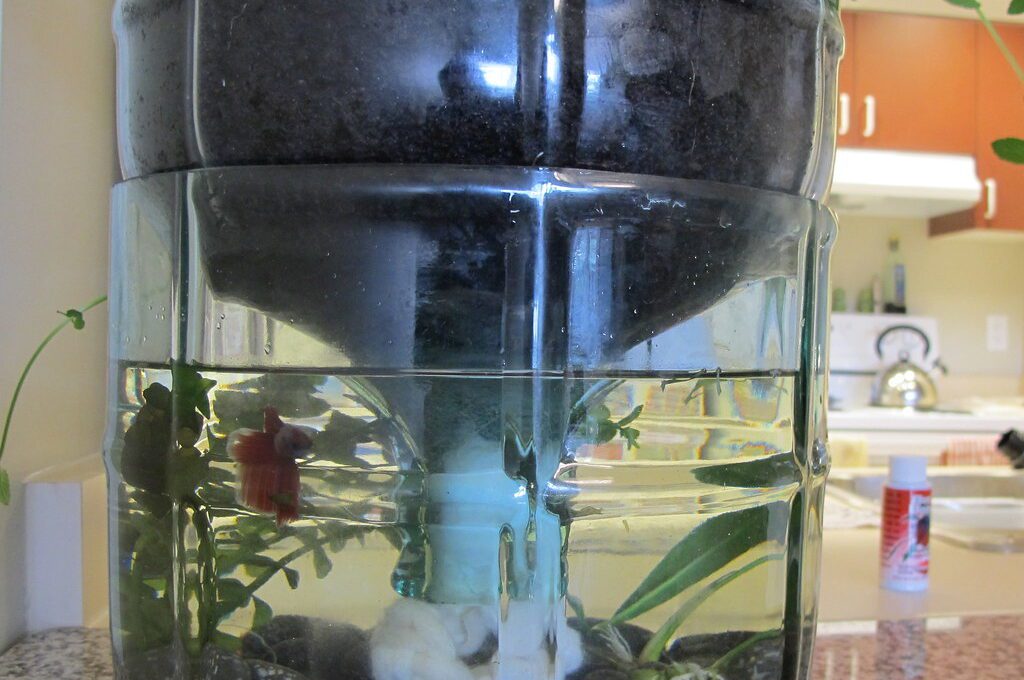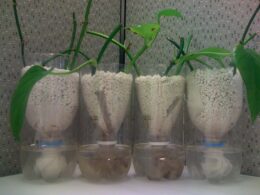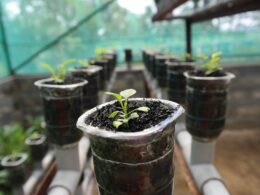Are you concerned about the safety of your drinking water? Chlorine is a common disinfectant used to kill harmful bacteria and viruses in our water supply, but it can leave an unpleasant taste and odor.
You may be wondering if boiling your water can remove chlorine and make it safe to drink. Boiling water is a common method for sterilizing water, but does it remove chlorine?
In this article, we will explore the science behind boiling water and its effectiveness in removing chlorine. We will also discuss alternative methods for removing chlorine and ensuring the safety and cleanliness of your drinking water.
So, sit back and relax as we dive into the world of water purification and learn how to keep yourself and your loved ones safe.
Understanding the Role of Chlorine in Drinking Water
You may be wondering about the role of chlorine in your drinking water and why it’s important to understand. Chlorine disinfection is the process of adding a small amount of chlorine to drinking water to kill harmful bacteria, viruses, and other microorganisms that can cause illnesses.
Chlorine is added to the water supply at the treatment plant, and it acts as a safeguard against waterborne diseases. Without chlorine disinfection, drinking water can be contaminated with harmful pathogens that can cause serious health risks.
While chlorine disinfection is effective in killing harmful microorganisms, it can also have adverse effects on our health. Chlorine can react with organic matter in water to form disinfection byproducts (DBPs), which can cause health risks. Exposure to high levels of DBPs can lead to cancer, reproductive problems, and other health issues.
This is why it’s important to have a basic understanding of the role of chlorine in our drinking water and to take steps to minimize our exposure to DBPs.
Boiling water is one way to remove chlorine from drinking water. When water is boiled, the chlorine is released into the air as a gas, leaving behind safe, clean drinking water. However, boiling water is not always practical or convenient, especially if you need large amounts of water.
There are other methods of removing chlorine from water, such as using activated carbon filters or allowing the water to sit in an open container for a few hours before drinking. By understanding the role of chlorine in our drinking water and taking steps to minimize our exposure to DBPs, we can ensure that our drinking water is safe and healthy.
The Science Behind Boiling Water
When you boil water, you’re effectively killing many of the impurities that may be present in the water. This makes boiling water a popular method for purifying water in many parts of the world.
However, it’s important to note that boiling water may not be effective in removing all types of impurities, and there are limitations to its effectiveness as a purification method.
How Boiling Water Affects Impurities
Boiling water can impact the presence of certain impurities. When water boils, it undergoes a physical change where it transforms from a liquid to a gas. As a result, any impurities in the water, such as bacteria, viruses, and some chemicals, become concentrated. This means that the concentration of these impurities increases in the water, making it more dangerous to consume.
To better understand how boiling water affects impurities, consider the following bullet points:
- Boiling water kills bacteria and viruses that may be present, making it safer to drink.
- However, boiling water does not remove all impurities, such as chemical contaminants, that may be present in the water.
- Boiling water can also cause the concentration of certain impurities, such as nitrates and arsenic, to increase, making the water more unsafe to drink.
In summary, while boiling water can be an effective method for removing some impurities, it is not a foolproof solution for ensuring safe drinking water. It’s important to be aware of the potential risks associated with consuming impure water and take appropriate precautions to protect yourself and your loved ones.
The Limitations of Boiling Water as a Purification Method
Did you know that boiling water may not be the best method for removing all impurities, especially when it comes to chlorine? While boiling can be effective in eliminating bacteria and viruses, it has limitations when it comes to chlorine resistance.
Chlorine is a common disinfectant used in water treatment plants to kill harmful microorganisms. However, boiling water does not remove chlorine completely, and as a result, it may not be the best method for purifying water if you want to eliminate chlorine. Boiling water can reduce the concentration of chlorine, but it does not completely remove it. This is because chlorine has a lower boiling point than water, which means that it can evaporate at a lower temperature.
As a result, some chlorine may still remain in the water even after boiling. So, if you are looking for a purification method that can remove all traces of chlorine, boiling may not be the most effective method. It’s important to consider other purification methods, such as activated carbon filtration, which can effectively remove chlorine and other impurities from water.
Does Boiling Water Remove Chlorine?
If you’re wondering whether boiling water can remove chlorine, there are some key points to consider.
Research has been done on the effectiveness of boiling water for removing chlorine, and it’s important to understand the factors that can affect the process.
By exploring these topics, you can gain a better understanding of whether boiling water is a reliable method for removing chlorine from your drinking water.
Research on the Effectiveness of Boiling Water
By heating up the liquid, the chlorine levels in the water may be reduced. Boiling water is a common method for disinfecting water and removing unwanted chemicals. However, the effectiveness of boiling water in removing chlorine may depend on several factors.
Here are three important things to consider when evaluating the effectiveness of boiling water in removing chlorine:
-
Boiling duration: The longer you boil the water, the more chlorine will evaporate. It’s recommended to boil the water for at least 20 minutes to ensure the maximum removal of chlorine.
-
Water quality: Boiling water may not remove all the chlorine present in the water if it’s heavily chlorinated. In such cases, you may need to use other methods such as activated carbon filters to remove the remaining chlorine.
-
Temperature: Boiling water at a high temperature may reduce the chlorine levels faster. However, boiling water at a very high temperature may also affect the taste and quality of the water. It’s best to boil the water at a moderate temperature to ensure the best results.
Factors That Affect the Removal of Chlorine
You may be surprised to learn that factors influencing chlorine removal go beyond just boiling water. While boiling can aid in removing chlorine from tap water, the type of disinfectant used and the pH level of the water can greatly impact its effectiveness.
Chlorine is a highly reactive chemical, and its ability to react with other substances in water can decrease its effectiveness in disinfecting water. The temperature of the water is also an important factor. Higher temperatures can accelerate the rate of chlorine evaporation, which can lead to a decrease in the amount of chlorine in the water.
However, it’s important to note that boiling water doesn’t necessarily guarantee complete removal of chlorine. In fact, it’s possible for some chlorine to remain in the water even after boiling. To ensure the complete removal of chlorine, it’s important to consider other methods such as activated carbon filters or chemical treatments.
Can I Use Boiled Water in My Hydroponic Tomato System to Remove Chlorine?
Using boiled water in a hydroponic tomato system to eliminate chlorine is a popular method among growers of hydroponic tomatoes. Boiling the water helps evaporate chlorine, ensuring it won’t harm the plants. This technique is beneficial for maintaining a healthy environment for growing hydroponic tomatoes.
Alternative Methods for Removing Chlorine
Discover other ways to get rid of chlorine in your H2O! Besides boiling water, there are other alternative methods for removing chlorine.
One method involves using activated charcoal to absorb the chlorine. This is a popular method because activated charcoal is readily available and inexpensive. Simply add the activated charcoal to the water and let it sit for a few hours. The chlorine will be absorbed by the charcoal, leaving you with chlorine-free water.
Another alternative method for removing chlorine is through the use of UV radiation. UV radiation has been found to be an effective way of removing chlorine from water. It works by breaking down the chemical bonds that hold the chlorine together, thus neutralizing it. To use this method, you will need a UV water purifier. Simply install the purifier onto your faucet or water source, and let it work its magic. The UV radiation will kill any bacteria and viruses in the water, as well as remove any chlorine.
In conclusion, boiling water is not the only way to remove chlorine from your water. Activated charcoal and UV radiation are two effective alternative methods for removing chlorine. These methods are easy to use, inexpensive, and will leave you with safe and clean drinking water. So next time you want to remove chlorine from your H2O, try one of these alternative methods and enjoy chlorine-free water.
Ensuring Safe and Clean Drinking Water
To ensure the safety and cleanliness of your drinking water, it’s important to consider alternative methods for removing harmful chemicals and bacteria.
One option is water filtration. This method involves passing water through a filter that can remove impurities, such as chlorine, sediment, and bacteria. There are various types of filters available, including activated carbon, reverse osmosis, and ceramic filters. Each type has its own benefits and limitations, so it’s important to research and choose the right one for your needs.
Another option is chemical disinfection. This involves adding chemicals, such as chlorine or iodine, to the water to kill bacteria and other harmful microorganisms. However, it’s important to use the correct amount of chemicals and follow proper procedures to ensure that the water is safe to drink. Overuse of chemicals can lead to health problems, and underuse can result in ineffective disinfection.
Ultimately, the best way to ensure safe and clean drinking water is to use a combination of methods. For example, you could use a water filter to remove impurities, then add a small amount of chlorine to disinfect the water.
It’s also important to regularly test your water and maintain your filtration and disinfection systems to ensure their effectiveness. With these precautions, you can enjoy clean and refreshing water that is free of harmful chemicals and bacteria.
Frequently Asked Questions
What are the potential health risks of drinking water with chlorine?
Drinking water that’s been treated with chlorine can pose potential health risks due to chlorine toxicity. While chlorine is effective in killing harmful bacteria and viruses, long-term exposure to high levels of chlorine can lead to respiratory problems, skin irritation, and other health issues.
Fortunately, there are alternatives to chlorine for water treatment, such as ultraviolet light and ozone treatments. These methods are just as effective at killing harmful bacteria and viruses without the potential health risks associated with chlorine.
It’s important to consider these alternatives and take steps to ensure that you’re drinking safe, healthy water. Remember, boiling water may remove some of the chlorine, but it’s not a reliable method for removing all of it.
How long should water be boiled in order to effectively remove chlorine?
Boiling water is a great way to purify it and remove harmful bacteria, viruses, and parasites. However, it’s important to note that boiling water doesn’t always remove all traces of chlorine. Chlorine residue can remain in the water even after boiling, depending on the concentration of chlorine in the original water supply.
To effectively remove chlorine, it’s recommended to boil the water for at least 20 minutes. This extended boiling duration helps to ensure that all traces of chlorine are removed, leaving you with safe and clean drinking water.
So, if you’re concerned about chlorine in your water supply, be sure to give it a good boil for at least 20 minutes to ensure that all chlorine residue is removed.
Is it safe to drink water that has been boiled to remove chlorine?
Boiled water safety is an important consideration when using chlorine removal methods. While boiling water can effectively remove chlorine, it’s important to remember that boiling water doesn’t remove all contaminants.
It’s safe to drink water that has been boiled to remove chlorine, but it’s always best to use a reliable filtration system to ensure that your water is free of harmful contaminants. Additionally, make sure to follow proper boiling procedures, such as boiling for at least one minute, and let the water cool before drinking it.
When it comes to water safety, taking these precautions is essential for protecting your health.
Are there any natural methods for removing chlorine from drinking water?
If you’re looking for a natural alternative to removing chlorine from your drinking water, then DIY filters might be the answer. There are many different methods you can use to create your own filter, such as using activated charcoal or sand and gravel.
These filters can remove not only chlorine but also other impurities like sediment and bacteria. Plus, using a DIY filter is an eco-friendly way to ensure your water is safe to drink without relying on chemicals or expensive filtration systems.
So, next time you’re worried about chlorine in your water, try making your own filter and enjoy clean, refreshing water with peace of mind.
How can you tell if your drinking water has high levels of chlorine?
To ensure your drinking water is safe, it’s important to test it for high levels of chlorine. Water testing kits are a quick and easy way to determine if your water has an excessive amount of chlorine. If the results show high levels, don’t worry – there are solutions.
Chlorine filters can be installed on your faucets or even on your showerhead to remove chlorine from your water. Don’t rely on boiling water to remove chlorine, as it isn’t effective.
Taking these simple steps can give you peace of mind and help keep you and your family safe.
Conclusion
Now that you understand the role of chlorine in your drinking water and the science behind boiling water, you may be wondering if boiling water can remove chlorine.
The answer is yes, boiling water for 20 minutes can remove chlorine from your drinking water. However, this may not be the most practical method for removing chlorine, especially if you need to remove large amounts of chlorine.
There are alternative methods for removing chlorine, such as using activated carbon filters or adding vitamin C to your drinking water.
It’s important to ensure that your drinking water is safe and clean, and there are many resources available to help you achieve this goal. Remember to always do your research and consult with professionals in the field to ensure that you’re using the most effective and safe methods for removing chlorine from your drinking water.








